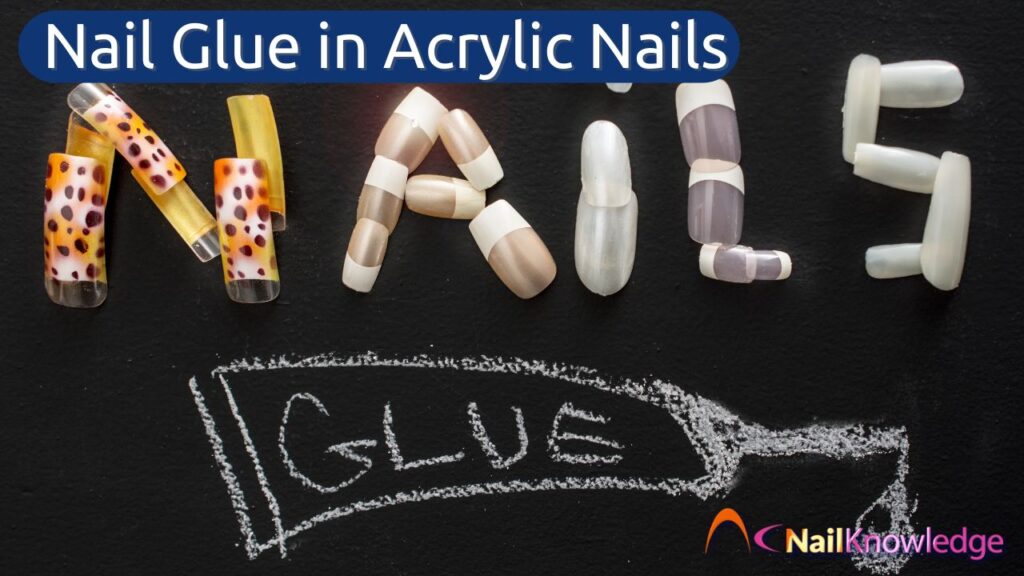Understanding the chemistry behind our products, particularly the use of nail glue in acrylic applications, is key to ensuring safe and long-lasting nail enhancements. Is it safe to use nail glue to attach tips to the free edge before applying acrylic? Yes, this is a long-standing, recognised method in the nail industry and is perfectly safe when done correctly.
Comprender la química de los productos para las uñas
Acrylates vs. Methacrylates
Nail glue and liquid monomer & powder polymer, also known as acrylic, are both derived from acrylates, a class of fast-reacting, strong-bonding compounds widely used in the nail industry.
- Acrilatos, like those in nail glue, are acrylic acid derivatives designed for rapid bonding and strong adhesion, enabling quick setting.
- Metacrilatosque se encuentra en monómeros acrílicos líquidos, include an additional methyl group, making them slightly less reactive. This slower curing time enhances durability and strength, perfect for sculpting mejoras para las uñas.
Por qué es importante
The chemical compatibility of nail glue and acrylic enhancements, due to their shared acrylate-based properties, allows for seamless adhesion and structure. However, these acrylates are monomers, which can be allergens. Improper use may lead to irritation or allergies over time. Hence, correct application and knowledgeable, safe usage are crucial.
Prácticas recomendadas para utilizar pegamento en las uñas acrílicas
Aunque el uso conjunto de pegamento para uñas y acrílico es una técnica estándar, la aplicación correcta es esencial para garantizar la longevidad, la seguridad y la protección del cliente.
- Utilice un pegamento para uñas de grado cosmético: Always choose a professional, cosmetic-grade nail glue designed specifically for nail enhancements. Avoid generic “super glue,” which may contain too-strong bonding agents harmful to the placa para clavos.
Preparación correcta de las uñas
- La preparación es la clave: The nail plate must be clean and dry before tip application. Gentle buffing removes surface shine for best adhesion, but over-filing should be avoided to maintain the natural nail’s integrity.
Evite el contacto con la piel
- La seguridad ante todo: El pegamento de uñas y el monómero líquido nunca deben entrar en contacto con la piel, ya que una exposición prolongada aumenta el riesgo de desarrollar irritaciones o alergias. Elimine inmediatamente cualquier contacto accidental con la piel para evitar una exposición prolongada.
Utilice la proporción correcta de líquido y polvo
- El equilibrio es esencial: Maintaining the correct monomer-to-polymer ratio is crucial when applying acrylic over the glued tip. Too much liquid leads to improper curing, while too much powder can create brittle, weak enhancements.
Minimizar la sobreexposición y mantener una ventilación adecuada
- Precauciones sanitarias: Working in a well-ventilated area and following manufacturer guidelines are vital to avoid sensitisation and allergies. Encourage proper hand hygiene for both the technician and the client to minimise prolonged product contact.
Reflexiones finales y recomendaciones
Using nail glue to attach tips to the free edge and reinforcing the structure with acrylic is a well-established, safe, and effective method—provided it is done with the correct technique and professional-grade products.
Principales conclusiones:
- Utilice siempre productos profesionales.
- Siga las mejores prácticas de higiene y aplicación.
- Respete la química que hay detrás de los productos para protegerse a sí mismo y a sus clientes.
- Minimize skin contact and overexposure to prevent allergies and irritation.
When done correctly, this method provides strong, durable, and safe enhancements that clients love! provides strong, durable, and safe enhancements that clients love! 💅✨


